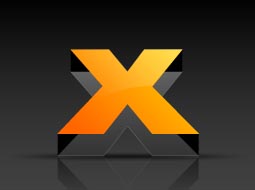WhoIs ULTRA
WhoIs ULTRA
WhoIs ULTRA
WhoIs ULTRA
WhoIs ULTRA
version 3.03
version 3.03
version 3.03
version 3.03
version 3.03
Documentation
Call me old fashion, but I don't like those new web-based whois utilities, and now with the changes Network Solutions made to the way whois works, they're next to useless. Maybe it's the banner ads, maybe it's the fact that they're loaded down with useless information (like .net and .org are available), or maybe it's just that they're slower than molasses. Of course, the good old days of the command line interface are dead, so how about a nice little GUI? Enter AnalogX WhoIs ULTRA - the next evolution!
AnalogX WhoIs ULTRA let's you do the basics, like see who registered a site and their contact information, but it doesn't just stop there... Looking for a new domain name? Just type in a keyword, and WhoIs ULTRA will try a whole slew of possible combinations - that you can customize! It then returns a simple list that let's you see which ones are taken, and which ones are available. You can then generate a report about the search you've performed, so you can look it over at a later date.
For the more advanced users, there is a config window, which allows you to tweak the way WhoIs ULTRA performs. You can toggle whether or not it checks .com's, .net's, or .org's, or even other top level domains (TLD's) such as .co.uk or .de when you are performing a keyword match. You can also change what happens when you doubleclick on a result - have it open a web browser on that page, copy the URL into the clipboard, or even view the returned text from the whois query (you can also select any of these by right-clicking on a selection)! You can change whether or not it appends any new searches onto the existing one - this is very handy when you want to perform multiple searches, and see the results all on one page. Finally, it supports a custom server for each TLD, meaning it's simple to just add any new TLD's when they become available.
If you're processing a large number of combo's, or a large list that you've loaded in, you will want to be aware of the new Lookup Mode options in the config. By default (Normal), WhoIs ULTRA will return all the information available on a domain name, who registered it, etc - if you're just checking a list, you may not be interested in this kind of information, and that's where UltraScan comes in. With UltraScan set as the Lookup Mode, it is about 5x-10x faster than Normal Lookup, and consumes far less memory than would be for processing large lists.
If you want to check a group of domain names, you can also choose to 'load' them; this simply loads up a listing of domain names or keywords, each one on a new line, and performs a whois on them. This is especially handy when you have a very large amount of domains to check, and don't want to have to periodically check the results.
When you've gotten your results, you can also click on the column titles in order to have the program automatically sort the results. This sorting will also be reflected in the reports it generates, so it's a great way to have all the available domains grouped together.
So now that you have the hang of the program, and now want to tweak it even more, let's talk a little about the 'whois.dat' file, which contains the info about the combinations that the program tries... Simply put a '*' asterisk wherever you want the keyword to be inserted; so if you are searching for a keyword like 'security', and you would like it to automatically check for some- thing like securityweb, you would add '*web' to the dat file. You could also add 'web*', which would translate to websecurity, or even 'web*site', which would become websecuritysite! In the config, you can also optionally choose to enable 'Dash' combo's as well - this simple means that in the above example not only would it check for securityweb and websecurity, but security-web and web-security; this is especially handy in giving you more matches.
Last updated on Tuesday, March 9, 2021 12:24:48 PM PST. AnalogX trade is a registered trademark of AnalogX, LLC. All other trademarks are the sole property of their respective owners. All contents copyright ©1998-2009, AnalogX. All rights reserved.

